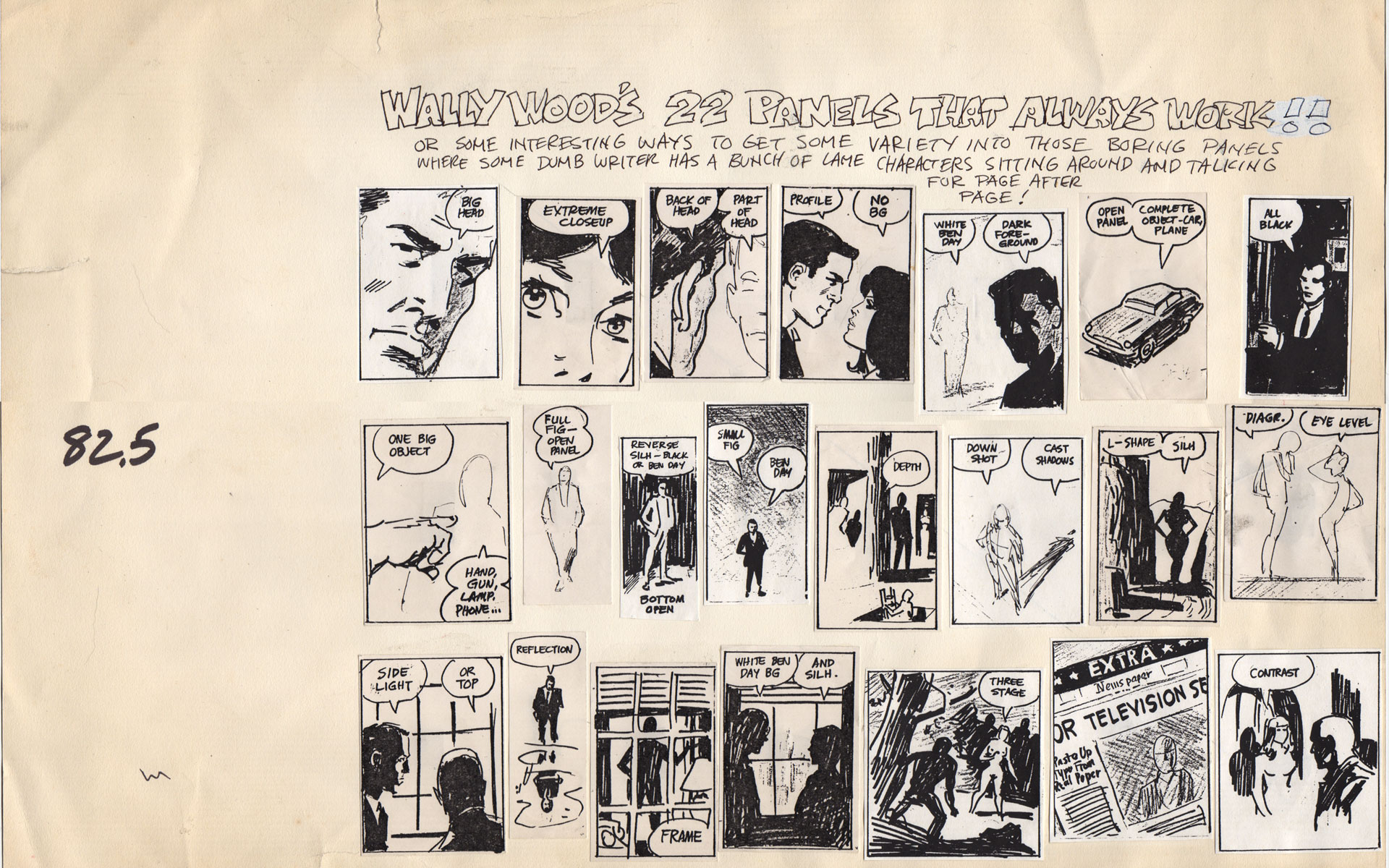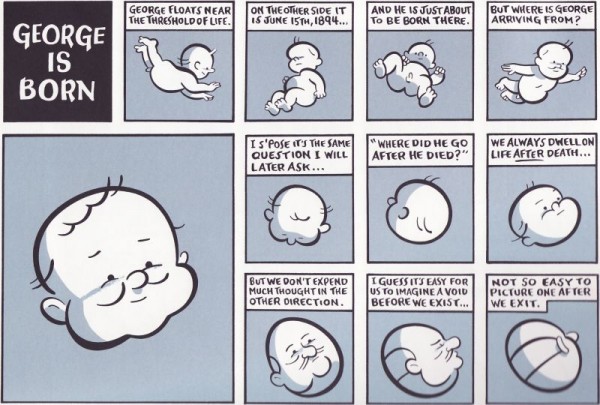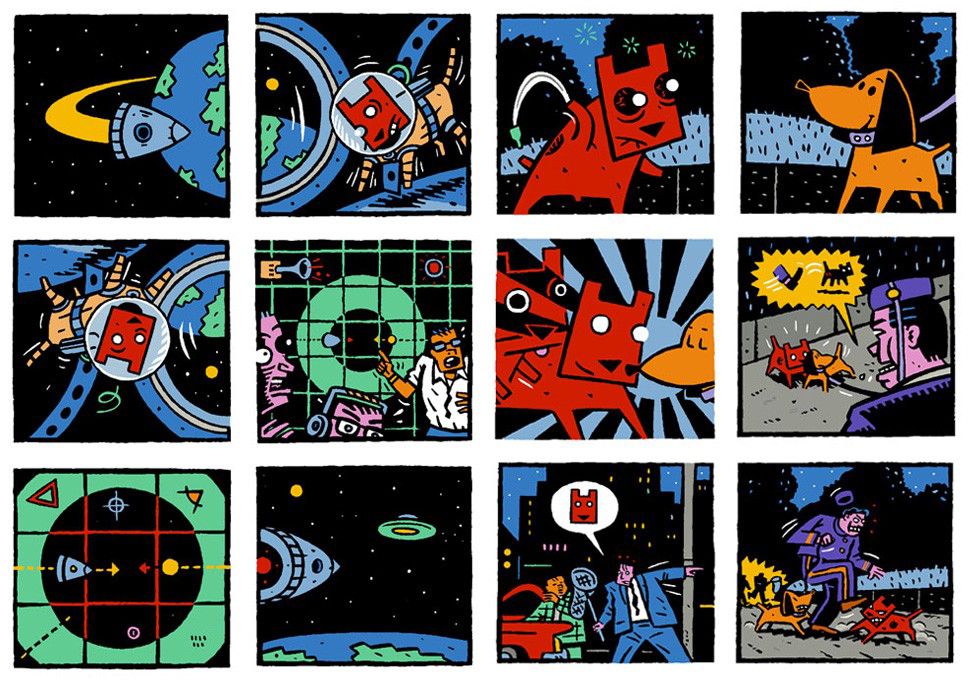Paul Gravett: Why make a Graphic Novel
Comics are one of the most progressive, changing, experimental and diverse mediums today, even though they've never quite reached the establishment (which isn't necessarily a bad thing)
1001 comics you must read before you die
Comics are a gigantic, ever-changing medium
comics art for tate
hicksville by dylan horrocks
Good books if you want to get into comics
- Alan Moore: Writing for Comics
- Lynda Barry: What it is
- Jessica Abel, Matt Madden: Drawing Words & Writing Pictures
- Scott McCloud: Understanding Comics
Comics have quite a long history
 Swiss author and teacher Rodolphe Töpffer can be regarded as the first European comic artist. He was the first to combine text and illustration and to divide a story into multiple panels.
Fearing for his reputation, Töpffer never published his work. He did, however, send a draft to Goethe who saw the potential of this new kind of storytelling.
Swiss author and teacher Rodolphe Töpffer can be regarded as the first European comic artist. He was the first to combine text and illustration and to divide a story into multiple panels.
Fearing for his reputation, Töpffer never published his work. He did, however, send a draft to Goethe who saw the potential of this new kind of storytelling.
 Comics in 1930’s America were mass-produced, printed on cheap stock and featured mostly male power fantasies (Superheroes) and slapstick humor.
Comics in 1930’s America were mass-produced, printed on cheap stock and featured mostly male power fantasies (Superheroes) and slapstick humor.
 After the second World War, comics increasingly featured horror, crime, romance stories, aimed at a more mature audience. They often contained graphic violence, which led to incresingly loud critisism.
Psychiatrist Fredric Wertham famously linked reading comics to crime in his book Seduction of the Innocent (1954). (His findings later turned out to be mostly made-up)
After the second World War, comics increasingly featured horror, crime, romance stories, aimed at a more mature audience. They often contained graphic violence, which led to incresingly loud critisism.
Psychiatrist Fredric Wertham famously linked reading comics to crime in his book Seduction of the Innocent (1954). (His findings later turned out to be mostly made-up)
 Comic book burning in bignhamptom in 1948
Comic book burning in bignhamptom in 1948
Comics were an easy thing to point the finger at when it came to problems with young people. After public court hearings against comics the government threatened to censor comics. Publishers eventually established Comics Code (1954) to prevent that. The code contained rules on what could and could not be done in comics, such as:
- No explicit details of a crime
- Females shall be drawn realistically without exaggeration of any physical qualities.
- In every instance good shall triumph over evil and the criminal punished for his misdeeds.
- Nudity in any form is prohibited, as is indecent or undue exposure.
- Policemen, judges, government officials, and respected institutions shall never be presented in such a way as to create disrespect for established authority.
American comics caused a huge public outcry when they were first introduced in Britain. The National Teachers’ Union and the Archbishop of Canterbury pushed the government to create the Children and Young Persons (Harmful Publications) Act (1955), which banned violence in comics.
In the mid-1960s people started collecting, and thereby validating comic books.
Why Make a Graphic Novel
getting beyond the first ten minutes
Ways to get into the industry
- Anthologies are a great way to get noticed, Off Life, Ink + Paper
- Artist can get portfolio reviews from publishers at conventions
- Competitions, graphic novel competition
- Go to meetups at places like Gosh!, Work in Progess Comics, Laydeez do Comics
- Comics Unmasked Exhibition at the British Library
 Wally Woods: 22 panels that always work
Wally Woods: 22 panels that always work
Comics seem to keep getting stuck in the same ten minutes - Art Spiegelman
_Breakdowns_cover.jpg) Art Spiegelman: Breakdowns (1977)
Art Spiegelman: Breakdowns (1977)
Unlike other mediums, comics give one person full creative control. This allows for much more experimental stuff to happen.
 Ilya: Room for Love
Ilya: Room for Love
oscar zarate: the park frederik peters
 Seth: George Sprott
Seth: George Sprott
seth barbershop fake story
comics allow you to flick through different fragments of time, place in many directions you look back and forth across the page document literacy, not just one panel at a time allows you to build a network of ideas
betsy and me, jack cole integrte narration and dialogue
jimmy corrigan by chris ware naughty pete by charles forbell
howard ferguson, the newsboy legion
 Dash Shaw: Bottomless Belly Button
Dash Shaw: Bottomless Belly Button
“OCEAN SOUNDS” Not afraid of showing and telling as opposed to “show don’t tell”
 Gianni De Luca: Hamlet
Gianni De Luca: Hamlet
Repeats characters multiple times in the same frame. Gianni De Luca & Hamlet: Thinking Outside The Box
 Frank Miller and Lynn Varley: Elektra Lives Again
Frank Miller and Lynn Varley: Elektra Lives Again
little nemo in slumberland by winsor mcCay
 David Mazzucchelli: Asterios Polyp (2009)
David Mazzucchelli: Asterios Polyp (2009)
676 apparitions of killofer by killofer
posy simmonds oppposing images with extedned passages of text
Distinctive drawing styles for different characters
different typography, different baloon shapes
david hughes
 Hendrik Dorgathen: Spacedog
Hendrik Dorgathen: Spacedog
Manga techniques
 Daisuke Igarashi: Children of the Sea
Daisuke Igarashi: Children of the Sea
- Full bleed images
- Double page spreads
- Pages with a full bleed black background indicate flashbacks or dreams
- Speech balloons without tails
[…] Combination of iconic characters with unusually realistic backgrounds […] allows readers to mask themselves in a character and safely enter a sensually stimulating world’.
Scott McCloud on Tintin
Questions
What do you think the future of comics might look like?
- Motion comics, 2d artwork that moves around in layers
- Digital media is starting to be used not to replicate a comic book but to do something new and interesting. (iPad isn’t a page, but a portal you look through)
- Things like Electricomics enable people to engage with comics in new ways
- Digital comics might have different layouts for different screen sizes (Phones, Tablets)
- Comixology edition of The Walking Dead does some interesting interactive stuff
- The fundamental thing comics do is letting the reader interact with it, giving the reader more control than any other medium. Digital media can do that in amazing new ways, as long as it’s not buried in cheap gimmicks.
- Korea is the largest market for web comics in the world. Their comics are heavily optimised for phones, there’s parrallax effect, phone will vibrate when you get to certain panels, scrolling activates things
Where are you drawing th line between comics and graphic novels, and do you think we need the distinction at all?
It’s marketing, but allowed comics to get into unis museums and shit we dont really need it